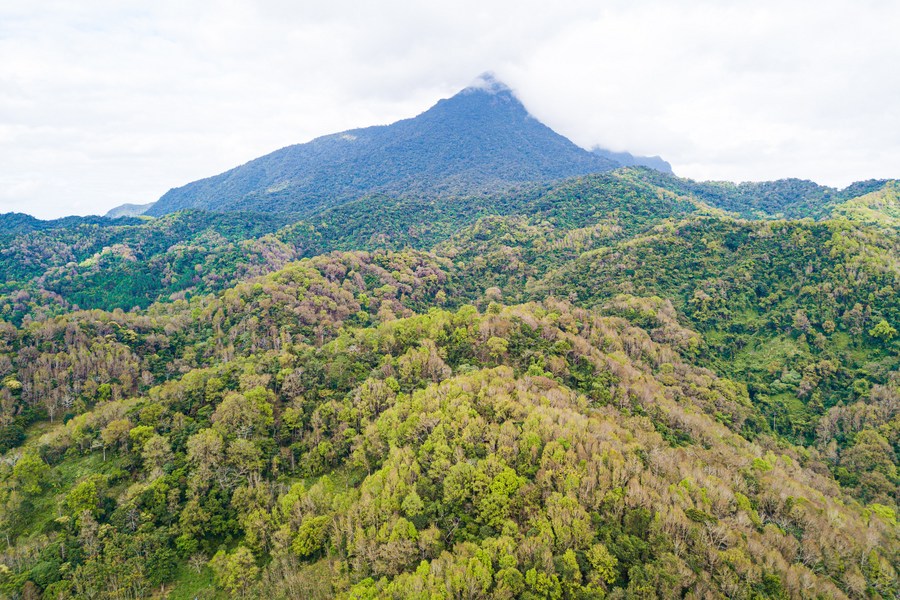After 24 Years, China again applies for ‘Dual World Heritage'

This aerial photo taken on Jan. 26, 2023 shows a view of the Wuzhishan section of the Hainan Tropical Rainforest National Park in south China's Hainan Province. (Xinhua/Pu Xiaoxu)
Li Xinmin, Deputy Director of the Forestry Department of Hainan Province, announced the official initiation of the application for the "Hainan Tropical Rainforest and Li Ethnic Traditional Settlement" as a “mixed” or “dual” cultural and natural heritage site. The announcement was made during the opening ceremony of the 2023 "Cultural and Natural Heritage Day" event held in Haikou, the capital city of south China’s Hainan province, on June 10th.
This marks China's first application for a dual heritage site since Wuyi Mountain was added to the world cultural and natural heritage list in 1999.
As of 2023, there are 39 dual UNESCO world heritages worldwide, with China having 4 of them, namely Mount Tai, Mount Huangshan, Mount Emei-Leshan Giant Buddha, and Mount Wuyi.
Mount Tai is the first natural and cultural dual heritage in China and also the world. It was included in the World Heritage Committee's "World Natural and Cultural Heritage List" in 1987.
During the 23rd session of the World Heritage Committee in December 1999, Mount Wuyi successfully met the selection criteria, becoming China's youngest world dual heritage site to date.
According to the Convention Concerning the Protection of the World Cultural and Natural Heritage, dual heritage refers to representative sites that embody both natural and cultural beauty. Hainan Island possesses rich and diverse natural resources, as well as cultural relics from different historical periods. The "Hainan Tropical Rainforest and Li Ethnic Traditional Settlement" is a typical representative and was included in the World Heritage Tentative List by the UNESCO World Heritage Centre in April 2022.
The Hainan Tropical Rainforest is the largest, best-preserved and the most concentrated rainforest ecosystem in terms of biodiversity distribution in China.
The village form and architecture of the Li ethnic traditional settlements reflect how Li people continuously integrate their own production and living with nature environment. The traditional land-use practices of the Li people have created a diverse ecological environment with mountains, forests, grasslands and fields, providing unique habitats for some endemic species.
"China's world heritage cause has made remarkable achievements in terms of protection, management, and utilization," said Yuan Xiaohong, Deputy Inspector of the Natural Reserve Management Department of the National Forestry and Grassland Administration.
Yuan introduced that China currently has 56 world heritages, covering over 70,000 square kilometers. These heritages house unique natural and cultural resources, maintain biodiversity, and contribute to China's experience in conserving global heritages.
Source: Beijing Daily; trans-edited by Guo Yao








